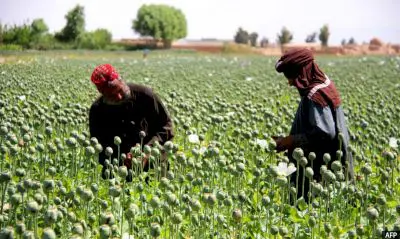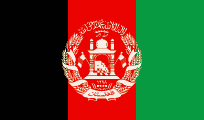Industry in AfghanistanAccording to the international standard classification of the field of activity, the industry includes mines, machine industries, electricity, gas, water, and construction

Livestock farming is a crucial component of Afghanistan's agricultural sector and rural economy. It plays a vital role in providing livelihoods for a significant portion of the population while contributing to Food security, nutrition, and income generation. The country is home to various key Livestock species that serve different purposes and have specific economic value. Afghanistan is an agricultural country with a high livestock capacity. According to some statistics, it has about four million cows and nearly twenty million goats and sheep. Afghanistan produces about 60 percent of its Dairy products domestically. According to the FAO, Afghanistan had 170,000 camels in 2019 - 5,600,000 cows - 7,900,000 goats and 10.6 million sheep.
Sheep, including the Karakul Sheep known for their high-quality pelts used in the fur industry, and the Fat-Tailed Sheep, valued for their Meat and wool, are prominent in Afghanistan. Cashmere Goats, producing fine undercoats highly valued in the textile industry, make Afghanistan one of the world's largest cashmere producers. Cattle are primarily raised for milk, meat, and hides, and they also serve as draft animals in agriculture. Camels, well-suited for transportation in arid regions, provide milk, meat, and wool. Poultry farming, particularly chickens raised for eggs and meat, contributes to household nutrition and income.
However, livestock farming in Afghanistan faces several challenges. Disease management is a significant concern, with livestock diseases like foot-and-mouth disease and brucellosis posing risks to animal health. Inadequate veterinary services further exacerbate this issue. Additionally, limited availability of quality feed and water, especially during droughts, affects livestock productivity. Poor infrastructure and security issues also hamper market access, reducing the profitability of livestock farming. Traditional breeding practices result in low productivity, highlighting the need for improved breeding techniques to enhance yields.
Moving on to the industrial sector, Afghanistan's industrial activities are centered around small and medium-sized enterprises (SMEs), with some larger-scale operations in specific sectors. The textile and Carpet industry holds a prominent position, with Afghan carpets renowned for their quality and intricate designs. Carpet weaving, a traditional industry, employs thousands of people. The textile industry encompasses the production of cotton, wool, and silk fabrics. Food processing is another significant sector, including the processing of dairy products like yogurt and cheese, as well as fruits and nuts, which are major export commodities.
The Construction materials sector in Afghanistan involves the production of cement, utilizing domestic Cement factories to supply the construction industry, and the processing of Marble and Granite for construction and decorative purposes. Mining and quarrying operations exist on a small scale, extracting Minerals like coal, salt, and precious stones, although limited processing facilities are available, leading to the export of most raw materials for processing abroad. Handicrafts, such as pottery, jewelry, and metalwork, contribute to cultural heritage and tourism, showcasing Afghanistan's traditional crafts.
According to the international standard classification of the field of activity, the industry includes mines, machine industries, electricity, gas, water, and construction. The value-added of this sector has reached 4 billion Afghanis in the year 1. The share of industry in GDP was 1.4 percent and its growth was -4.1 percent. The main contribution to the reduction of this sector is the reduction of mines and their extraction. Afghan Handicrafts also include carpet weaving, hand-woven carpets, rugs, felts, and coarse loosely - woven woolen cloth weaving, which are spontaneously available in the country. Afghanistan exports about 2.5 million square meters of carpet annually.
However, the industrial sector faces various challenges. Ongoing conflict and political instability hinder industrial development and deter investment. Poor infrastructure, including unreliable electricity and transportation networks, limits industrial growth. A lack of skilled labor and technical education further constrains the development of more advanced industries. Bureaucratic hurdles, corruption, and inconsistent enforcement of laws create a challenging business environment. Limited access to financial services and credit facilities restricts the growth of SMEs and industrial enterprises.
In conclusion, while both livestock farming and the industrial sector in Afghanistan face significant challenges, they also hold substantial potential for contributing to economic development. By addressing these challenges through strategic investments, regulatory reforms, and capacity building, Afghanistan can leverage its resources to build a more robust and diversified economy.
To unlock the full potential of both livestock farming and the industrial sector, Afghanistan can pursue certain opportunities and development strategies. Investment in infrastructure, including improving roads, power supply, and communication networks, is crucial for industrial development. Capacity building through training programs and educational initiatives can enhance the skills of the workforce. Regulatory reforms that simplify regulations and improve transparency can attract domestic and foreign investments. Public-private partnerships can drive industrial growth and innovation by fostering collaborations between the government and the private sector. Developing export markets for Afghan products, such as carpets, textiles, and processed food, can further boost the industrial sector.






